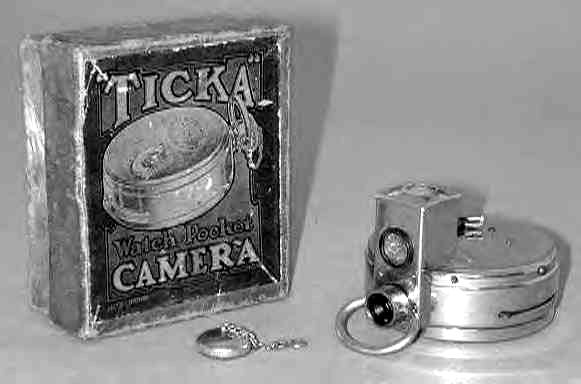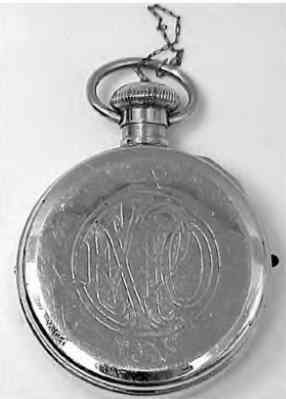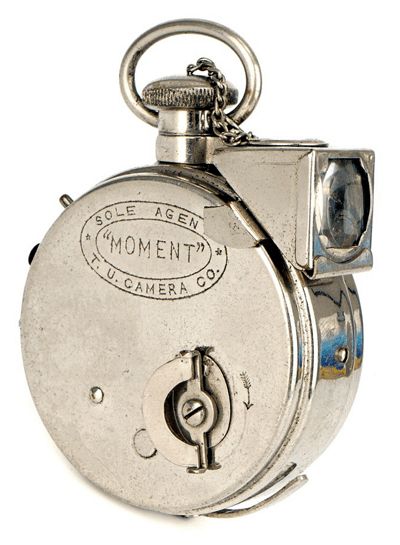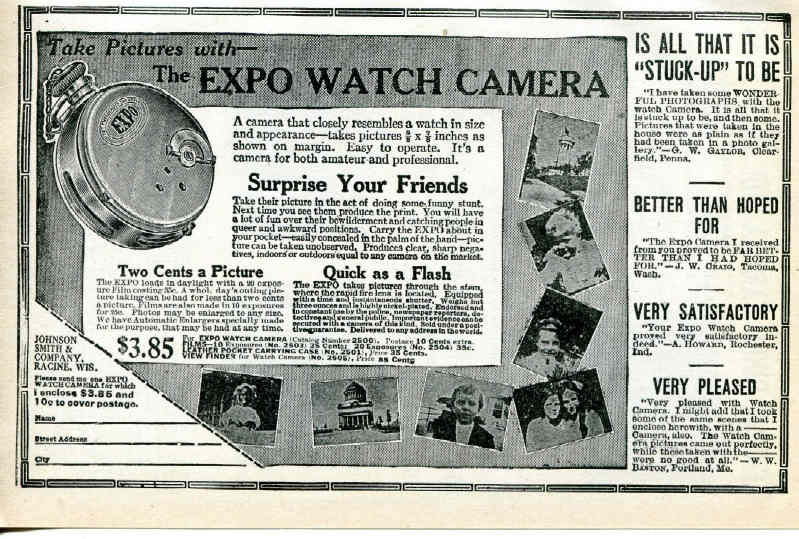





TICKA - EXPO - MOMENT
The Ticka is truly an international camera. Variations of the same camera were patented, manufactured and sold in several countries. The original was designed by Magnus Niell (see the Submini Hall of Fame) and the first patents were made in the UK around 1904, followed by the US, Germany and Japan. Production started in short order through several companies, and the camera was very popular.
At the turn of the century, disguised cameras were the rage and the Ticka fanned the flames by selling an inexpensive pocketwatch camera. The camera did not have a watch inside, and it is a little large for a pocketwatch -- about an inch thick and nearly three inches across -- but it is still very pocketable. It had two shutter speeds -- B and I (1/50) -- and a fixed-focus 30mm (f16) lens. It took about two dozen 16x22mm images on 16" rolls of film in special metal & wood cassettes. The lens was inside the "neck" of the "watch" -- the "watch's winding knob" acting as a lenscap! A wide variety of accessories were available, such as a waist-level finder, an eye-level finder, an enlarger, shutter timer, tripod and more. In addition, various modifications to the camera were made in different countries over several years -- these are very rare and prized by collectors. A solid silver model was sold for one year in England as was a model with a watchface. The watch didn't work, but the watch hands were fixed at 10:10 pointing out the angle of view of the lens. There was even a model with a focal plane shutter offering speeds from 1/75 to 1/400, plus B. On some models a focusing f6.5 lens was available.
Starting in 1905 in the US, the camera was sold as the EXPO (center, above) and was available in a variety of colors. To complicate the designs even more, the names on the exteriors of the cameras are seen with various type faces. It was still being sold until about 1940.
Around 1910, the Ueda Camera Company in Japan (founded in 1901) decided the sell a copy as well and called it the Moment (above, right). It is the rarest of all of these variants.
With all of these cameras, the shutter speed is selected with a lever
on the side -- either T or I -- with the lens cap on (it is attached with
a chain so it won't get lost!).
The film is advanced to the next frame with a film counter and "key/flap" on the opposite side.
The unusual "cassette" consists of wooden feeder and take-up spools held inside a metal top and bottom. The take-up spool connects to the film advance "key/flap" on the outside. As with many 120 SLR cameras, the film is loaded backwards -- against the curl.

COPYRIGHT @ 1995-2022 by Joe McGloin. All Rights Reserved.